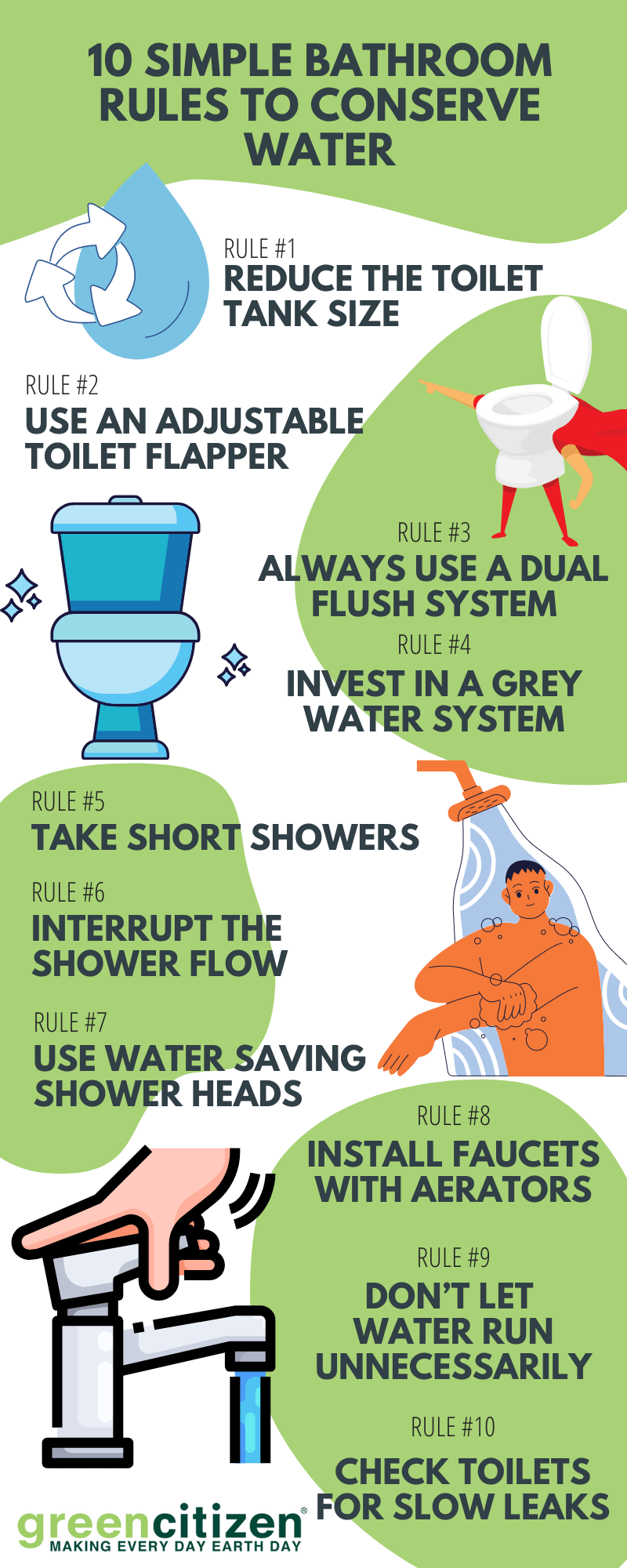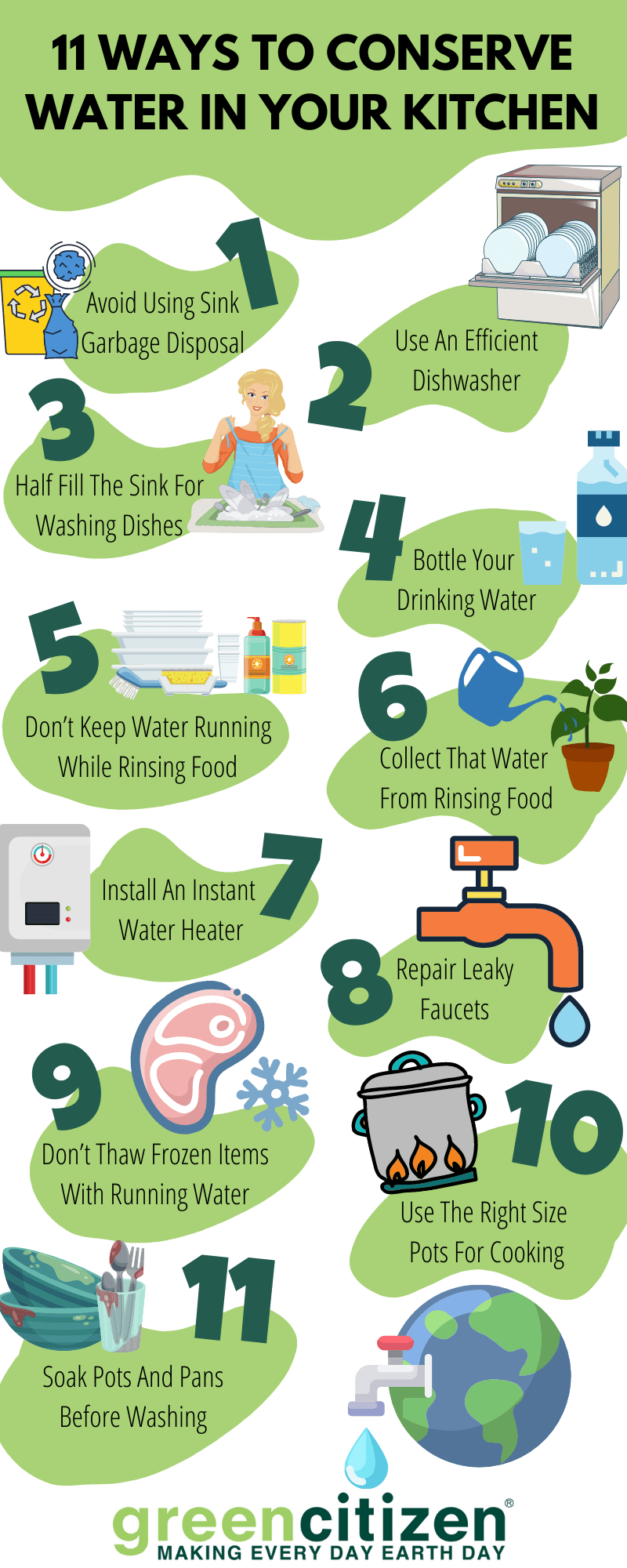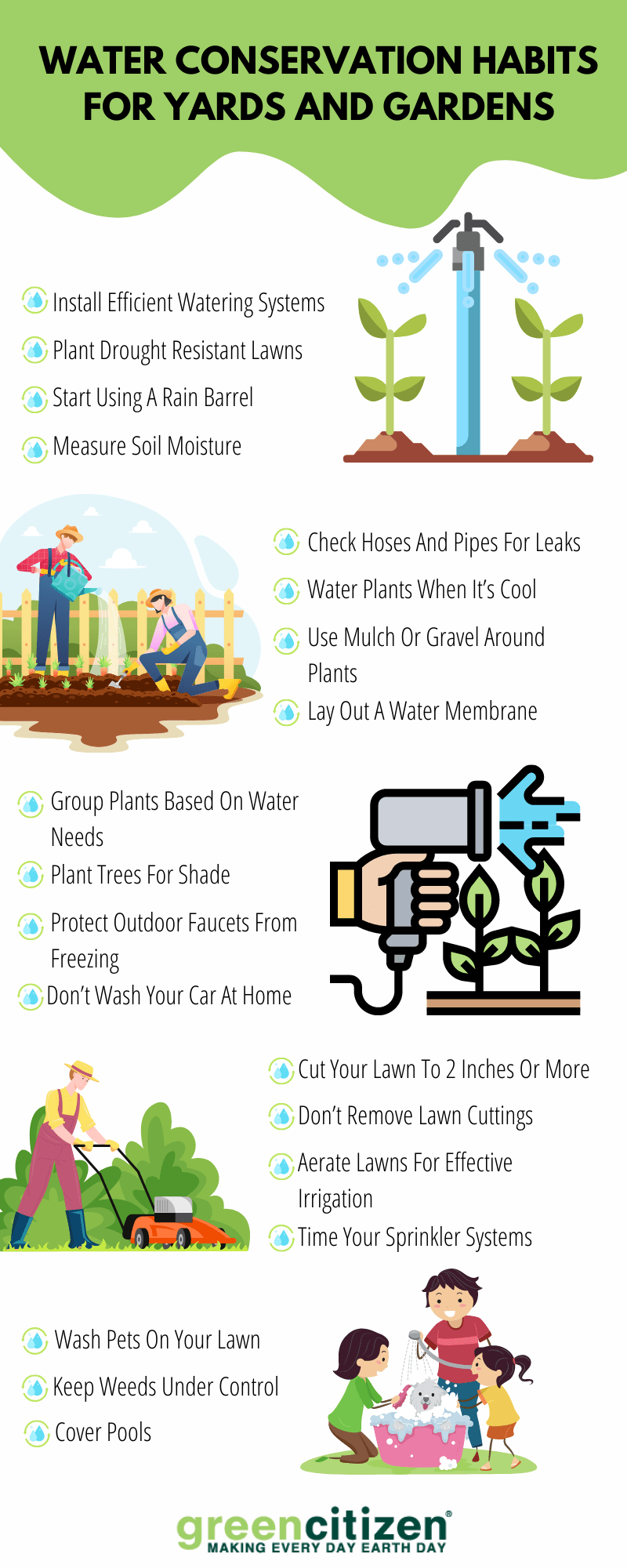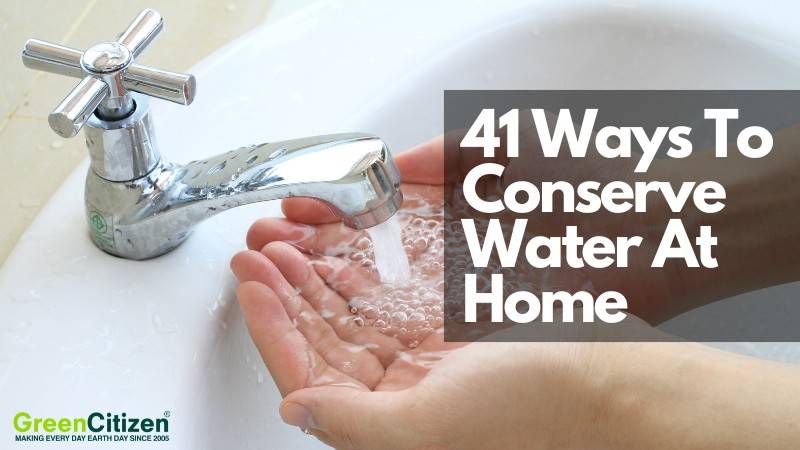For most people in the Western world, water is simply something that arrives in our homes, and it’s pretty much always right there when we need it. But our water consumption levels have been increasing at a pace that is unsustainable and leading to major problems.
Many places are already experiencing drought conditions that have led to water reservoirs running dangerously low. And if we all continue doing the same thing, then one day, that faucet will have little more than a drip of water.
To help you take action at home and save thousands of gallons of water every year, I’ve come up with a list of 41 easy ways to make water conservation part of your everyday life.
41 Dead Simple Ways to Conserve Water At Home
Let's Start with Our Laundry Habits
1. Invest In A High-Efficiency Washing Machine
One of the appliances in your home where you can save the most amount of water is in your washing machine. Each wash can use more than 30 gallons, but with one of the latest machines, you can bring that down to less than 15 gallons. And the energy savings are huge as well.
2. Always Fill Your Washing Machine
Some of the newer washing machines are smart enough to detect the volume of clothes you put in. But even then, a half load will have a much higher water footprint, and you’ll be paying a lot more for electricity as well.
Bathroom Habits for Conserving Water

3. Reduce The Toilet Tank Size
It might look like your toilet tank is a fixed size, but you can place a 16 or 20-ounce water bottle filled with water into the tank to reduce the amount of water in each flush. That can easily save five to ten gallons of water per person in your home.
4. Buy An Adjustable Toilet Flapper
This is the device inside your toilet tank that controls how full the tank gets. With an adjustable flapper, you have more control over fine-tuning the right amount of water for a good flush and save water in the process.
5. Always Use A Dual Flush System
A dual flush valve essentially has two buttons which result in a different volume of water flushing through your toilet. That gives you much more control to decide with each trip to the toilet how much water is really needed.
According to EPA, on average, American families use 300 gallons of water every day.
6. Invest In A Grey Water System
These are bigger investments and will require more extensive work on your drainpipe system. Basically, the water from the sinks and your shower is diverted into a separate tank. And that tank is used to fill the toilet tanks. This can save thousands of gallons off your water bill, and that will pay for the investment pretty soon.
7. Take Short Showers
I know that after a long day or on a cold winter evening, it can be extremely relaxing to stand under a hot shower for 20 minutes to unwind. But you can conserve water by the thousands of gallons a year by setting a time limit of 5 to 10 minutes.
8. Interrupt The Shower Flow
Here is the one tip that has changed my water conservation and energy bills the most. I get under the shower and immediately wash and rinse out my hair. Then I stop the shower and wash the rest of my body. Only then do I turn on the shower to rinse off.
The whole shower can end up using less than 5 gallons of water.
9. Use Water Saving Shower Heads
This is another simple but highly effective investment in water conservation. And it comes with the added bonus of making your shower more enjoyable. These types of shower heads increase the pressure of the water flow by slightly restricting it.
The result is that you save water and get a massage-like effect on your skin.
According to Guardian, about 5 billion people could be affected by water shortage by 2050.
10. Install Faucets With Aerators
Most modern faucets have these already, but I would advise checking that you only have low-flow faucet aerators in your whole house. They slow the flow of water and also avoid water excessively splashing in the sink. You’ll save on your water bill and end up with less of a mess.

Read More:
11. Don’t Let Water Run Unnecessarily
How often have you watched someone brush their teeth for 2 to 3 minutes while that faucet is running nonstop? Worse yet, they leave the hot water running, wasting energy as well. Instead, make sure everyone in your home gets into the habit of never leaving the water run when it’s not absolutely necessary.
12. Check Toilets For Slow Leaks
You’d obviously notice if your toilet tank was leaking onto the floor. But what’s much more common is for the water to leak into the toilet, where it goes unnoticed. The result could be hundreds of gallons wasted.
To test this, put some food coloring in the tank after you flush, and then check the toilet every few hours to see if the water color in the toilet has changed.
Conserve Water with Your Kitchen Habits

13. Avoid Using Sink Garbage Disposal
It might be tempting, but using your sink garbage disposal sparingly will help with conserving water. It often takes many gallons of water a day and drives up your energy costs as well. And you should aim to compost vegetable food waste to make an even better impact on nature.
14. Use An Efficient Dishwasher
I know this might sound counterintuitive, but the latest dishwashers often use a lot less water than what it would take you to wash full loads in the sink. And to make sure you keep the energy impact down, aim to turn your dishwasher on at nighttime. You’ll save on the electricity and house water meter.
15. Only Half Fill The Sink For Washing Dishes
This is where people often drive up their water usage in the kitchen. They look at some dishes to clean and then fill the sink to the top. In reality, unless you’ve been hosting a large party and have dozens of glasses and plates to clean, there’s no need to fill the kitchen sink.
Try going halfway, and then top it up with tap water if needed.
16. Bottle Your Drinking Water
Instead of running off a pint or two of water to get a cold glass of drinking water, fill plastic bottles and keep them in the fridge. You’ll have much more refreshing drinking water and won’t be running off many gallons a day to get that refreshment.
California accounts for almost 10% of all water withdrawals in the USA, with Texas in second place at 7%.
17. Don’t Leave Water Running While Rinsing Food
Washing off fruit and vegetables is part of everyday life, but there’s no need to do this under a running faucet. You can save gallons of water by simply filling a pot with 2 to 3 pints of water and then rinsing off the food in standing water.
18. Collect That Water From Rinsing Food
Once you finish rising off food in a pot, don’t just pour that leftover water down the drain. Use it to water indoor or outdoor plants instead. It’s the perfect reminder to keep your plants healthy while using water that you otherwise would have wasted.
19. Install An Instant Water Heater
If you have a central water heating system, then it probably takes quite a while for it to get to your kitchen faucet. That’s a lot of water just running down the drain until you start to feel the warm water. With an instant water heater, you’ll run off a lot less water and reduce your carbon footprint by only heating the amount of water you need in the kitchen.
20. Repair Leaky Faucets
A kitchen faucet doesn’t have to be dripping with that annoying sound. It’s far more likely that it might be dripping in a way that you barely notice. A small drip can often run along the faucet, and they can add many gallons per day to your meter.
According to National Geographic, American homes use 345 billion gallons each year, which is enough to place the state of Rhode Island under one foot of water.
21. Don’t Thaw Frozen Items With Running Water
It’s tempting to put some frozen meat under running water to speed up the thawing. But this is going to waste a huge amount of water. It would be more efficient to use your microwave on a defrost setting, as this will also use relatively little energy.
22. Use The Right Size Pots For Cooking
If you’re planning to boil some vegetables for one person, then don’t get the largest pot you have. Not only does this drive up your water usage, but you also waste a lot of energy to heat up that amount of water.
23. Soak Pots And Pans
If you’re in the habit of doing your after-dinner cleanup where you wash pots under running hot water, then try this simple trick. Before you sit down to enjoy your meal, simply add an inch of hot water, detergent, and vinegar to the pots and pans.
Once it comes to cleaning up, it saves on water and won’t require anywhere near as much effort.
Water Conservation Habits for Yards and Gardens

24. Install Efficient Watering Systems
Landscape irrigation is probably where your water meter runs on overdrive. If you have an automated irrigation and sprinkler system, then make sure it has efficiency settings and that it properly targets plants.
If you simply spray thousands of gallons of water everywhere in your garden, then water conservation will be a big problem.
25. Plant Drought Resistant Lawns
This is probably one of the best ways of saving money, water, and effort. Most drought-resistant lawns will also be slower growing, which means you won’t have to get the lawnmower as often either. Some of these types of grass only need water every 3 to 5 days, even in very hot climates.
26. Start Using A Rain Barrel
One thing you should consider doing is attaching a large water storage barrel to your rainwater pipes. That way, you can divert rain from the roof of your home, garage, or sheds and gather up thousands of gallons of water.
You really shouldn’t be using drinkable fresh water for your plants and lawns.
27. Measure Soil Moisture
Many people overwater their lawns and plants. Not only is that bad for water conservation, but it can damage your plants as well. All you need is a moisture meter to take a few readings in your lawn and around plants to tell if they need more water.
This can also allow you to only water those areas of the lawn that are driest due to most sun exposure.
28. Cover Pools
If you have a pool in the garden, then make sure you use a proper cover or create shade in other ways. The more you can avoid direct sunlight on the water, the less of an impact the pool will have on your water meter.
According to EPA, household leaks can waste more than 1 trillion gallons of water each year in the USA, which is equal to annual water usage of 11 million homes.
29. Check Hoses And Pipes For Leaks
It’s not just leaky faucets that can be a problem in the garden. If you use long hoses and pipes to get to different parts of your garden, then make sure you regularly check them for leaks. Even a small crack can end up costing you thousands of gallons.
30. Water Plants When It’s Cool
Another simple habit for saving water is to only water your plants and lawn when it’s cool outside. That means early in the morning or late in the evening. You’ll ensure that less water evaporates before it gets into the ground and it’s also generally better for plants.
31. Use Mulch Or Gravel Around Plants
Rather than have exposed soil around your trees, shrubs, and plants, use some bark mulch or gravel to cover the ground. This helps to trap more moisture in the ground and protect the soil from excessively drying out.
32. Lay Out A Water Membrane
If you’re planning to plant larger areas, then aim to put down a water-permeable weed barrier. These are large sheets of woven plastic, and they work extremely well to keep moisture in the ground. You’ll also save on effort to control all the weeds.
According to UNICEF, about 4 billion people — two-thirds of the global population — experience water scarcity every year (for at least one month)
33. Keep Weeds Under Control
Most weeds grow very quickly, and that growth is predominantly fueled by draining the soil of water. Aim to remove weeds as they pop up so that your lawn and plants have less competition from unwelcome weeds.
34. Group Plants Based On Water Needs
This takes a bit more planning, but the more you can put plants together based on their watering needs, the more control you have over what areas to water on any given day. Some might only need a light sprinkling once a week, while others need a daily dose.
35. Plant Trees For Shade
The more natural shade you can create over other plants and laws, the less water your garden will need. You’ll always find that the driest soil is in places where there is constant direct sunlight, making it increasingly necessary to water.
36. Protect Outdoor Faucets From Freezing
People are often surprised how even a small crack in an outdoor faucet can clock up thousands of unnecessary gallons of water use. And one common reason for leaky faucets is cracks from freezing in winter. Some simple faucet covers are the best way to stop this.
37. Don’t Wash Your Car At Home
It might seem like the right thing to do, but washing a car at home where the water just runs off the driveway is a huge waste of fresh water. Instead, find a local car wash that specializes in reusing water to minimize per-wash water usage.
According to UNICEF, about 50% of global population could be living in the water scarce areas by 2025.
38. Wash Pets On Your Lawn
If you use biodegradable soap to wash your pets, then try to do so on your lawn. There’s no reason that water cannot feed your lawn after it has cleaned your pet. Even if you need to use a basin to contain your pet, simply put it on the driest part of your lawn to make emptying it in the right place easier.
39. Cut Your Lawn To 2 Inches Or More
If you leave your lawn a few inches longer, then it will provide a lot more natural shade for the soil and roots. You’ll be able to measure the difference this makes with the moisture meter mentioned above. And you can use this approach to preempt water restrictions.
40. Don’t Remove Lawn Cuttings
It’s tempting to remove all the cut grass from your lawn, but those cuttings can provide a huge water-saving benefit. They provide additional shade for the soil, and some of the water the cuttings still contain will transfer to the ground as well. There’s also a benefit from a natural fertilization point of view.
41. Aerate Lawns For Effective Irrigation
This should be part of your lawn maintenance anyway. But if you don’t have a lawn aerator, then invest in one now. This machine will punch holes in the soil to make sure that water can penetrate deeper down while at the same time limiting runoff. It’s also the best way to ensure a deep soak down to the bottom roots.
Have You Started Taking Some Water Saving Actions?
Gradually adding the above actions to your daily habits will have some significant water-saving results for your home. And the important first step is to become aware of your actions on a regular basis.
To see how much of a difference you can make, check a recent water utility bill for your average monthly usage.
Then start implementing these changes and see how much less water you end up using in the coming months. I wouldn’t be surprised if you end up saving thousands of gallons of water every month.
And once you have some water meter results, then please share those with us in the comments below.


